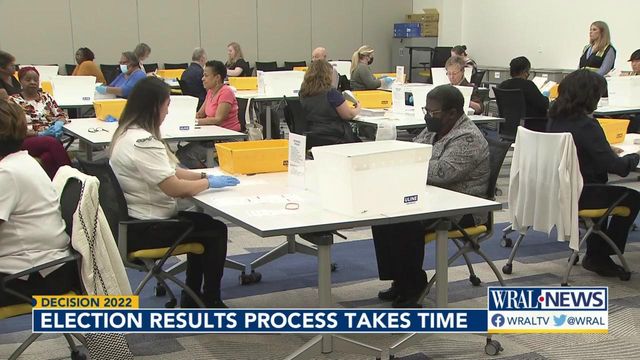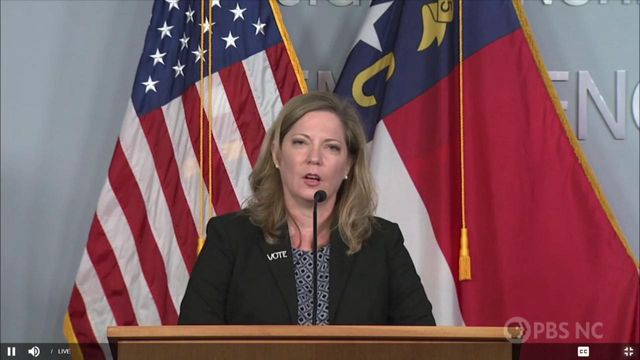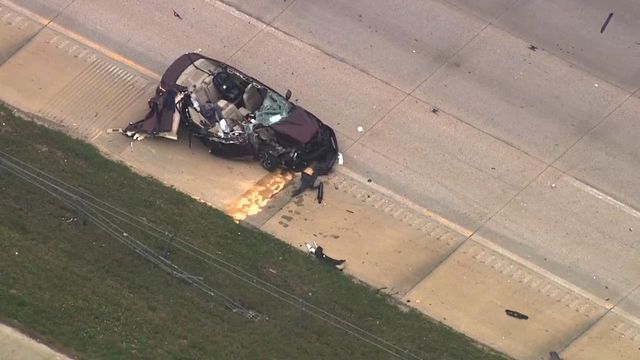Here's why you don't get final results on Election Night
Election Day is almost here. The polls are set to open at 6:30 a.m. Tuesday in North Carolina. But we won't have final results for at least ten days.
During the 2020 election, the time it took to get final results became a big issue. Many states took days to finalize their results. Election deniers claimed that was proof there was something criminal going on, and that we should have had the results on election night. There was no proof of any wrongdoing.
Elections officials say that's just how the process works, and it always has been. They say the system is designed not for speed, but to ensure the security of your vote and to make sure every eligible vote is counted.
Early and absentee votes. North Carolina law allows county election officials to run early and accepted absentee ballots through a tabulator before Election Day. But they don’t know who’s winning, because they’re not allowed to actually add up the early and absentee-by-mail votes until 5 p.m. on Election Day. The early and absentee ballots are usually the first ones you’ll see reflected in election results when the polls close Tuesday evening. North Carolina voters tend to vote early, so those first results you see may represent half or more of the total vote.
Election Day voting . On Election Day, the polls officially close at 7:30 p.m., but anyone in line at that time at their precinct will be able to cast their ballot. Just a few years ago, North Carolina used voting machines with modems that could report the results as soon as voting was over. But security concerns led the state to ban modems in voting machines starting in 2018. So it takes quite a bit longer now to get results.
As each polling location closes, officials must tabulate the results, secure the machines and ballots, and physically drive them all over to the county elections board, where they’ll be added up on a secure computer and then uploaded to the state elections site. In large counties with a lot of precincts, this process can take a while. For example, in Wake County, there are 208 precincts, which means traffic jams in the parking lot at the county elections board as 208 chief precinct judges line up to bring back their results.
Late-counted votes. Even later on Election Night, the results still aren’t final yet. They won't be final till 10 days after the election, when the county election board gathers for what's known as the canvass. That's because more legal, eligible votes are still coming in.
Ballots from absentee voters in the U.S. that were postmarked by Election Day can be counted if they arrive in the mail by the third day after the election. This year, because that third day falls on Veterans Day, which doesn't have mail service, the deadline is Monday, Nov. 14.
Ballots arriving from overseas and military voters have an even longer period to be counted. They're eligible if they're received up to nine days after the election as long as they were postmarked by Election Day.
And there's the issue of provisional ballots. Those are the ballots voters can use on Election Day if show up at a precinct to vote, but are told they're not eligible to vote there. Election officials have to research each provisional ballot to determine whether that voter was truly eligible to cast it. The bipartisan county board decides whether to accept or reject those.
These late-counted votes usually make up only a tiny fraction of the total vote count. However, in a very close race, they can change the outcome.
County election officials also use the ten-day canvass period to reconcile numbers and conduct hand-eye audits, making sure every vote was correctly and fairly counted before certifying the results.
After that, the county results go to the state, which has an additional ten days to follow up on any issues and double-check vote totals before issuing election certificates that allow the winners to be sworn in.











